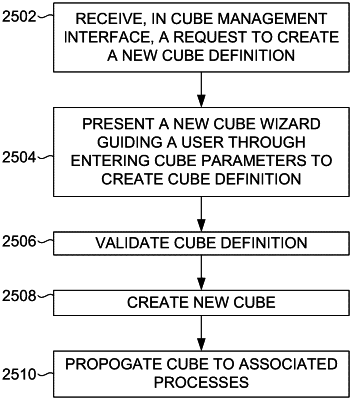| CPC G06N 5/04 (2013.01) [G06F 9/453 (2018.02); G06F 16/245 (2019.01); G06N 20/00 (2019.01)] | 20 Claims |

|
1. A computer implemented method performed by an analytics system comprising:
receiving, in a model management interface on a computing system, a request to create a new model;
presenting a model creation wizard interface in response to the request to create the new model, the model creation wizard interface guiding a user through entering one or more custom model parameters of a custom model definition;
receiving, in the model creation wizard interface, the one or more custom model parameters, wherein receiving the one or more custom model parameters comprises:
receiving a request to generate a custom time series model,
receiving, via the model creation wizard interface, a cube identifier identifying a cube comprising data from a data intake and query system,
receiving, via the model creation wizard interface, a tracking feature of the custom time series model, the tracking feature being in the cube,
receiving, via the model creation wizard interface, an output description of the custom time series model, the output description comprising a model description and a definition of output fields, and
receiving, via the model creation wizard interface, a time frequency parameter for defining a rare event;
transforming, by the computing system, the one or more custom model parameters of the custom model definition into the custom time series model, wherein transforming the custom model definition comprises generating a machine learning model to detect anomalies according to tracking feature and the time frequency parameter; and
executing the custom time series model in the analytics system.
|